Jerry Lewis and Martin Scorsese
Last October at the Museum of the Moving Image as part of the Iconic Characters of Comedy series, Jerry Lewis sat down with Martin Scorsese in a meeting of great filmmaker minds. On the eve of the Museum of Modern Art’s series “Happy Birthday, Mr. Lewis: The Kid Turns 90,” here are a few abridged highlights of their conversation.
An Introduction
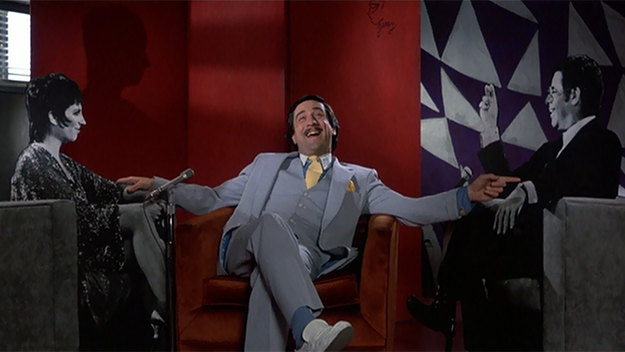
The King of Comedy
Martin Scorsese: When I think of comedy, there are so many legendary names that come to mind. One of them is here tonight, of course. He doesn’t need an introduction, but I’m going to introduce him anyway. I saw him for the first time in the movies in the late ’40s. He had a partner at the time, and as the years went on, we got to know him better and better. And he did it all, from stage to TV to movies. He and that partner worked with a great film director named Frank Tashlin, who created a whole new kind of era in movies. He started to direct pictures himself and as a director he was a true pioneer. He’s the author of a definitive book on filmmaking and film technique, and the first moviemaker to use video assist, a technology we all use now and take for granted. We always talk about independent cinema; he really is an independent artist, a real independent filmmaker—and stayed that way.
When I made my picture The King of Comedy, I had a casting decision. I said, “Who could epitomize the art of show business?” Then I realized, “Who is prominent in all aspects of show business? Who’s done it all?” Stand-up, stage performances, comedy teams, recording artists, Las Vegas, The Copa New York, film director, film innovator and pioneer, TV performer, TV talk-show guest, TV talk-show host, a true artist and a true renaissance man of entertainment, of cinema, of comedy—the true king of comedy, Jerry Lewis.
Inspirations
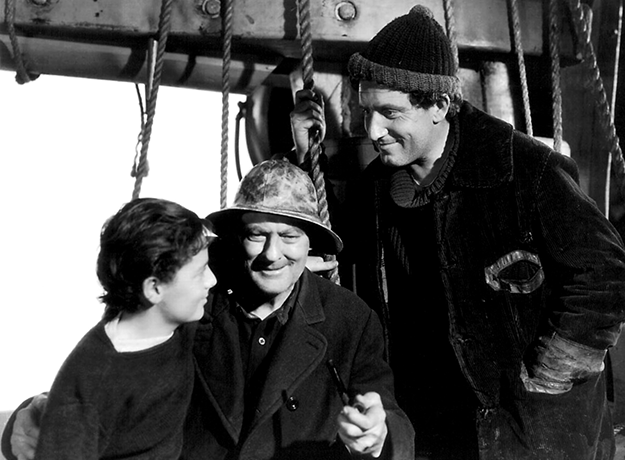
Captains Courageous
MS: What about the first film you saw made an impression on you?
Jerry Lewis: Every filmmaker, as you know and I know, had that first film wonderment. For me it was Captains Courageous—Spencer Tracy, Melvyn Douglas, Lionel Barrymore, Mickey Rooney, John Carradine….
MS: It’s a wonderful movie. I screened it for my daughter on 35mm on a big screen… What about performers who influenced you? Filmmakers, directors, performers…
JL: At the beginning, I heard Carol Reed was a wonderful director and I made sure that I saw the work. But when I think of magnificence in film, you have to put Billy Wilder right at the top. The writing he did with I.A.L Diamond was just marvelous… There’s nothing to correct in [Victor Fleming’s Captains Courageous]. It was sheer magic, and the performance of Spencer Tracy made you realize why you’re not an actor. What I took from Tracy was that he had a wonderful time. I got that from his performance, and I knew that I had to find the device where I could have a wonderful time.
MS: Exactly, exactly.
JL: Because there wasn’t once that I can recall that I’ve been in front of the camera where I was annoyed or impatient. Once we rolled, the magic that came from that camera went into my heart and I fell in love with stuff that was so bad it was ridiculous, but I learned from that. Then I learned that the director had a lot to do with it and I loved that. But then, I started to look at straight films. I would never look at comedy for me—I looked at comedy as a viewer, but I would never look at any comedy for “Jerry.”
The directors that I admired early on were the same directors that I admired 25, 30 years later. George Roy Hill had my attention immediately, and I can go on and on and on and it’s not interesting. The first three days that I was at Paramount, they couldn’t find me. I was in the editing room, I was in the camera room, I was in wardrobe, I was in miniatures…I would go everywhere on the lot (except the legal department). I learned about all of the stuff that I wanted to know from the people working there. Editors: wonderful! Archie Marshek was editing something, and I would spend a half-hour with him and learn pretty good. But what I did with the camera was different from what they did and I didn’t need to copy. I needed to bring my own dimension from my own emotion to what I wanted to do…
MS: And you said you were also in the editing room with Stanley Kubrick?
JL: Yeah, he was cutting 2001. He was cutting it across the hall from me at Metro in London, and he walks in every day and says, “How do you write a joke?” I said, “How do you write a joke?” He said, “I would never do it because I don’t know how.” I said, “Well, whatever you’re doing is making you a living so what the hell is your problem?” He wanted to know literally how that visual joke worked, how did it start. And it’s tough to go back and remember how you did it. You knew Stanley, did’t you?
MS: No, just once or twice on the phone, that was it.
JL: Well, what you could do is go to the home and ask for who’s the nut in the house, and if they pointed to the nut, you’d know it was Kubrick. But we had great times—there was nothing he taught me that I’d wanted to reuse…
Setting the Scene
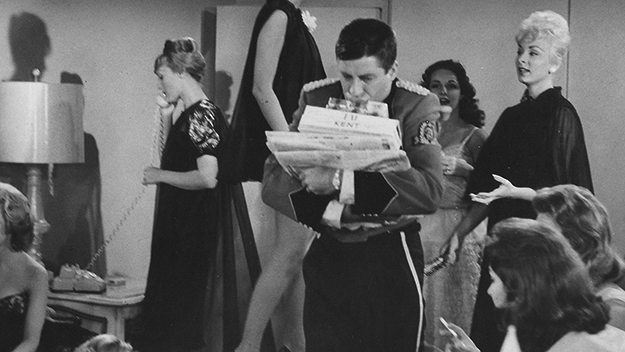
The Bellboy
MS: Is there an underlying theme—with humor being the vehicle—in the film work that you’ve done? Something that draws you to create these things?
JL: You know, it’s so different. To talk to another director is very difficult because he’s going to steal everything you know! But the joy for me, when I finish writing, is getting it on its feet. You take a look at what you enjoy most, and I enjoy it all, from the setup to the actors, the movement, the camera marks, the cues… It very difficult to give another man your timing. I love that I’m looking at [Scorsese] and I’m telling him—he knows all this! The world of what we do is so huge, and when you have a small scene, but it has the plotline, you’ve got to protect it. You work very hard with the actors, you let them come easily to it, and then build. And at the finish line you have the scene. When people begin in film, they find out the director is the doctor, the brother, the father, the friend, the compatriot, and you go to the director when you have a problem. As any good actor knows, he’s there for you to find out what he wants, and if he hasn’t made it clear, ask him again… In my book, The Total Film-Maker, I confessed that everything I know I got from Hitchcock and a few of those other fat guys.
MS: The first film you directed, The Bellboy [60], is a film that is very intense in terms of the framing. You directed, produced, wrote it, and starred in it. In a way, it’s like a virtual dictionary of visual thought and visual thinking. And to this day, there’s a constant battle between the literature in film, in the dialogue and in the story, and the visual. You went all the way visually with The Bellboy—you even used pantomime in that! Can we talk a little about that approach, or the purity of that approach?
JL: Mime was very important to me because you didn’t have to remember the words. It was important to me because mime was always at the bottom of all comedy. And when you’re doing it, you have to keep your mind clear. You can’t get in the way of the scene or become part of that. You’re supposed to be here as an individual and as a single person doing what you’re doing. Now you bring the ensemble in, and you dress it, and you work it, and he has to be funny. Sometime he [“Jerry”] gave me problems. When he got overly anxious, he would screw me up and I would yell to the crew, tea time! Get coffee or do something, cause I’ve got to have a talk with the star of the movie! I I looked at the mirror and said, do you want to make this, or what’s your plan? And I would talk back to myself.
MS: That’s great. But it’s true, then you’d have to compose yourself and really watch the body language of everyone else in the frame too, that you’re playing off of. So you’ve got to control that also. Then when you cast your pictures—with Kathleen Freeman, Buddy Lester, all these people—how do you determine that a person can really fit into the design?
JL: I wanted Buddy to play a gangster, so I put a scar that went all the way down his face. You knew the minute you looked at him he was a bad guy. When you do it in make-up is one thing but then you have to do it with the actor, as you know. And when the actor isn’t really hearing you that’s when the video assist saved my life so many times. I take him over to the video assist and I tell him, let me ask you if you want me to print this, and I played the scene for him and his body is all over the place. I say to him, watch what you do when he asked you the question, and he watches and says, I never stand that way. He says, why do I do that? And I say, because you forget that the body speaks pretty much by itself. It doesn’t need you, but with you, I would appreciate if it knew what it was talking about.
MS: And besides Buddy, who else did you work with that you felt was really crucial?
JL: Well, I could never make a film without Katy Freedman.
MS: Oh, she was amazing.
JL: I wrote a seven-page scene—single-spaced!—to replace the scene we were going to shoot the next day. And I brought it in at six in the morning, had it printed, distributed it to the crew, and I said to Kathleen: “Whatever you learned in the last week, forget it, because here’s what we’re doing.” I gave her the seven pages, she knew them better than I did! And she did it in take one. That’s what she was. And I love when people say, is it true you had an affair with all your leading ladies? I say, do you think that’s true? I worked with Agnes Moorehead!
Innovation and Revision
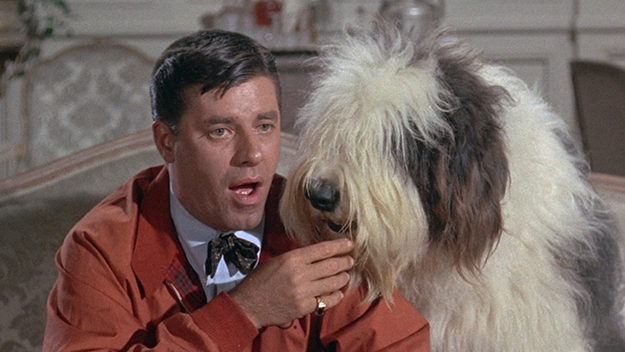
Who’s Minding the Store?
MS: So how did you decide to make the video assist?
JL: I didn’t want to ask anybody, “How was that?” That was something that was against my nature. “How was that?” Jesus, if I don’t know how it is, why am I asking him? But I knew there was a way for me to see what I was doing, so I went to Tokyo, and I met with the Morita family, co-founder of SONY. And the son of Morita stayed with me for four months, working on the video assist. I used it on The Bellboy for the first time. Marty, you know this as well as I do, a lot of directors don’t want to use it because you see how they work, and they don’t want you to see how they work. And there are times when they work, and they don’t want you to see how the work is not great.
MS: And everybody sees.
JL: So it became a wonderful protection. They’re not going to fool with the video assist because it’s going to tell you everything. And the beauty of it was, you could tell an actor a hundred times about weight distribution. If you’re standing on your right foot, then I’m getting half an eye. You need to stand here. And then we’d try it and then I’d get another half an eye. You need to put your weight 50 percent here, 50 percent there, and say the line. Now try it. We’d roll video assist. Show it to the actor. Then he’d go onto the set and do it perfectly. I found that to be a tremendous tool.
MS: Yes. I think the very first video assist I used was a two-inch black-and-white on King of Comedy. That was the first time I used it—and that was 1981!
JL: Two-inch.
MS: Yeah, and that was it. Before that, the camera operator was very important—still is, of course! But he was the one you turned to for “How was it?” Because that was the take, in terms of movement or whatever. So you were blind in a way. It’s amazing. How do you deal with writers? Working with writers must be an ego situation where everybody’s gotta throw in the best. Does it come from the days of working on television or stage in a similar way?
JL: Pretty much. But when you have writers that aren’t doing you, they’re bringing material that’s for another movie! What the hell is that? You have to be so careful because if they are taking your idea, they’re developing it in their mind. They’re not coming to you with it. What did you have in mind? Writing was always a joy for me when I could be alone. And you know what that is, Marty: you can sit sometimes and the fingers don’t do anything, and you just sit. Wonderful, white paper staring at you: what are you gonna do now, putz?
MS: You’d never done that—a script that was handed to you in any way?
JL: King of Comedy!
MS: Yes, but that was as an actor. Except for one scene where I had Jerry direct for me, and that was the scene of the woman in the street. Do you remember? And that was fascinating to watch: the way he worked with her—a really good actor—for the timing. The telephone call: please say hello to my husband. What we did is we had long, long lenses so people didn’t know [we were filming]. People actually thought in the street this was happening. I was hiding, and observing you.
JL: I knew I was safe because he had The Total Film-Maker in his chair all the time.
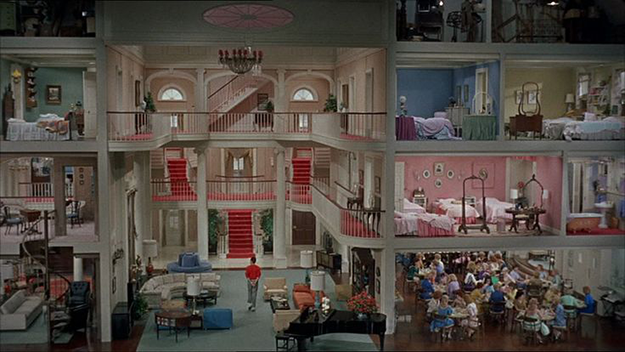
The Ladies Man
MS: I also feel that way about the music in your films. You know how they always say, the city is another character. That’s another character—the music is another character. It really is in your pictures. There are so many routines that are done with music, but one of the key things I remember is from The Ladies Man [61], which is a big influence on me. That house that’s cut in half and you pull back and you see the entire studio and everything. You know, in Gangs of New York, the Old Brewery was cut in half in the beginning of the film and we pull back and it’s the same thing, only they were doing totally different things in the room.
JL: That set cost me $895,000. And that was in 1960-something. I had wonderful actors—wonderful performers that never got in the way of comedy. They helped it. They brought an energy to the comedy. It must be rough for an actor to work with a comic. What you have to remember is: the actor thinks you’re God, you’re all-powerful. And that’s the way they should think because then they get to listen to what the director has to say. They listen carefully. I have worked with so many actors that didn’t listen. They weren’t hearing you. I’d say to the actor, I know you never thought you’d be in the presence of a super-Jew, but try to concentrate.
MS: But did you ever have a situation where actors contributed stuff that you hadn’t planned on?
JL: I used to tell them, bring it to me. Because all I’m going to say is yes or no. And actors who had this wonderful feeling about the project would bring me things. And they were wonderful. But sometimes you say, “What do you do for a living? Don’t bring me that!” And I’ve turned down things that came from the crew that were wonderful and I tried them, but they’d turn a 10-week shoot into a 17-week shoot.
MS: But I was getting to the music thing: for example, in The Ladies Man there’s this great scene where the woman in black goes into that room, and I had never seen anything quite like it when I first saw that. The crispness of the color, too! I don’t know if this was VistaVision, but all your films of that period feel that way. And you finally go in the room and there’s this snake-like apparition, and it turns out it’s Les Baxter with the entire orchestra!
JL: If you’re going to do fantasy, or make-believe, it gives you tremendous freedom but it mustn’t get in the way of the joke, or the action. The decision-making process is something people don’t know about a director in a film. The decision-making process doesn’t happen at the scene, at the print. It happens when the director is looking at the footage and says, “We can do it better. I got a better idea.” I’ve done it a number of times.
MS: And shot again?
JL: Yep—and the first way was better!
MS: I know! You did all that and the first take was the one two weeks ago…?
JL: You would tell Thelma and she’d say, “You got it already!”
All in the Timing
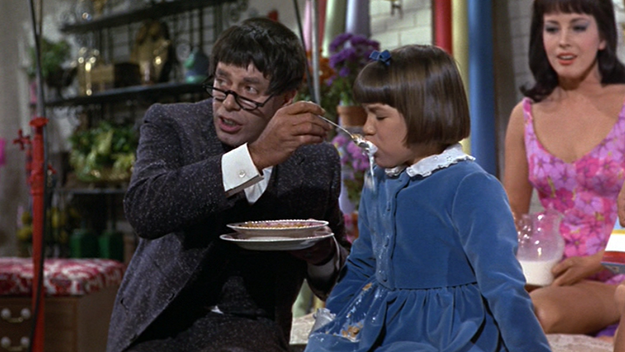
The Family Jewels
MS: The thing about The Ladies Man and The Bellboy and The Family Jewels [65] and all these films is, we didn’t learn in the sense that we went to the theater to learn. What I was fascinated by was that the structure of the story was so loose that you can open a door and get into an orchestra with Les Baxter. You can get the house cut in half. There’s Helen Traubel, she’s doing her routine. There’s a story, but is there a plot? I don’t know! And so, with these pictures, it opened our heads to say you don’t have to be stuck to a three-act structure in terms of narrative. You can make a film about a guy trying to get into a building. This really freed us in terms of thinking about what cinema is. So in terms of the timing within the frame, he does that masterfully, of course. But then in terms of the editing, how does one deal with that, if you come in for a tighter shot? When, as you set the time in The Colgate Comedy Hour, you put your foot in the turkey dinner? You remember? I saw that live.
JL: “Take your filthy hands off that bird!”
MS: The timing was impeccable. And you told me there was a slave camera, another camera that picked it up immediately. Have you had some very interesting relationships to these kinds of situations in the editing room? In terms of pacing.
JL: Well, you know how many times you plan something for a wide shot with a lot of animation and then all of a sudden you come to it and it’s not what you really want to do. And you start trimming and taking a piece from here and a piece from there… And I’ll play that back when I sit in the editing room, and I’ll do what I used to call “death march” footage—you’re going to get killed unless you fix this!—and you talk to yourself once in awhile.
MS: It’s true, because the pacing is like music. And you do music. You know, as a recording artist, you conduct an orchestra. Comedy is music in that way. Cinema is music. That timing carries through. It’s impeccable. I’d seen some of the Chaplin films earlier, but they are not the way your stuff was presented at that time in the late ’50s/early ’60s. To be able to respond to a visual image that had such fluidity to it in terms of pacing and comic timing. We’d never really seen anything like it. And the scripted scenes and improvised scenes: the improvisation that you would do physically would fit within the scripted scene. That’s another issue, I think: you had more control of it because you were doing it.
JL: I had holes to fall in all over the set. You never know when I’m going to use one! I gave of myself completely. I’ve got so many more scars on my body, you’d think I’d played NFL football! I came out of a three-story window into cardboard boxes, which were supposed to save me, and I landed on the corner of them. I’ll show that to you later. No, I won’t.
MS: I was talking earlier about the visual and the verbal, and the benefits of thinking about comedy in visual terms as opposed to the verbal ones. Because it opens the door, and I’m quoting here, “to incongruity and laughter.” And there’s a structure to visual comedy that you talked about. I mean, verbal comedy is wonderful, but the visual comedy is so much more complicated.
JL: It gets to the brain faster! The eyes see the visual faster than the ears hear hearing. And when you’re sure of something and you go full throttle, you see it’s right but you’ve got to do it with the actors. You can’t guess. No guessing!
MS: So when you do it with the actors, and you start to get an idea for a picture and you’re talking about it, you get a character idea. How do you build that character, how do you approach it?
JL: I think the character drives you. When you get it the way you want it, get him the way you want it, he’ll drive you pretty much to get you on his side. Fellow performers make it a competitive scene, and I’ll say to the actor, remember what I told you about what you should be doing here? Your idea doesn’t work! You’ll never make a film thinking that way. You want to do it the way I asked you?
MS: It always goes back to the adrenaline. If you’re not enjoying it, it’s no good. But you’ve also said, and I have a quote here: “Comedy comes out of violence, which is a brother to tragedy. When it’s funny, the audience will reject the violence.” And obviously from Chaplin to Chuck Jones this holds true. Could you tell us a little bit more about that quote?
JL: Yeah, I think it comes out of pain. It comes out of uncertainty… To do comedy, you can learn how to talk about it. But you can’t do anything with this. If it’s missing the visual, you gotta start over again.







